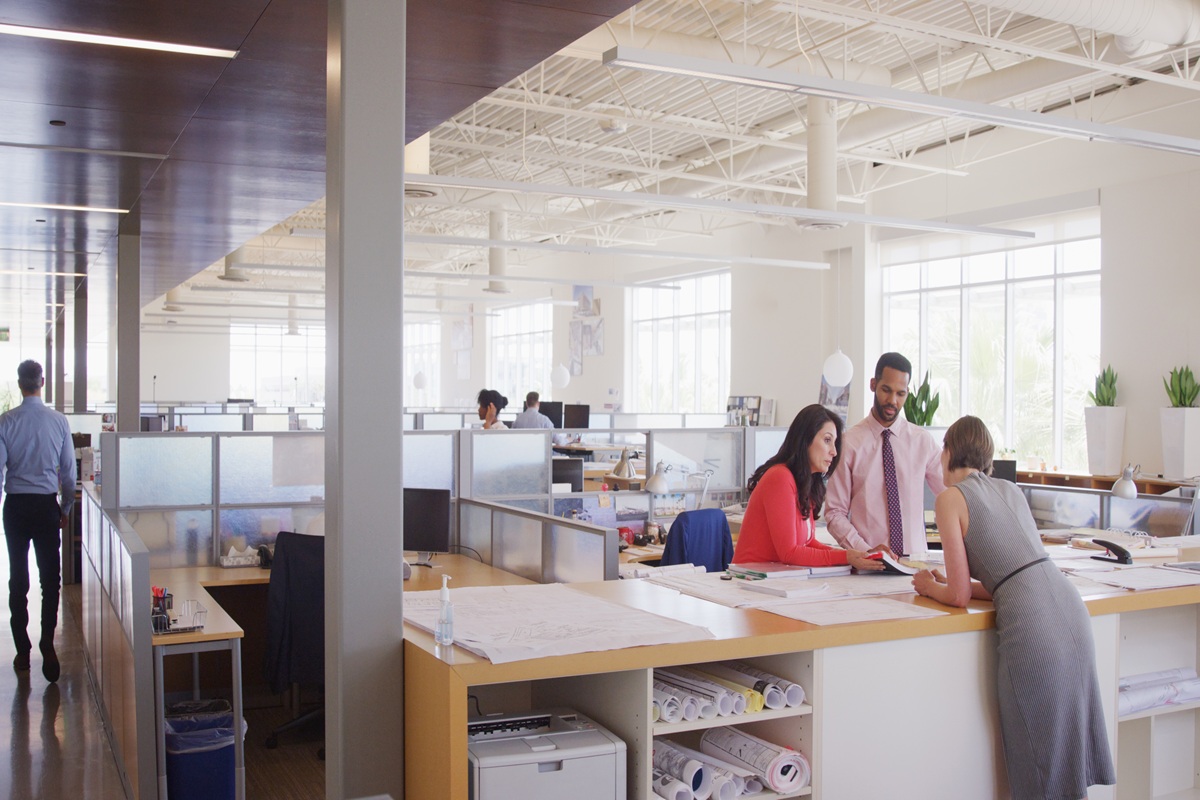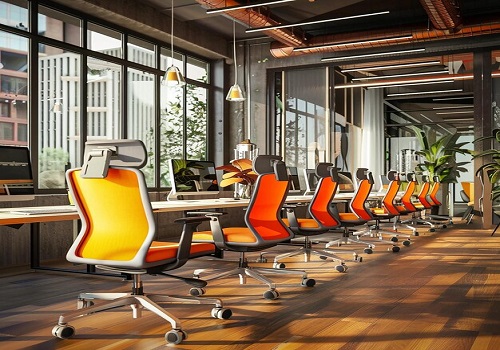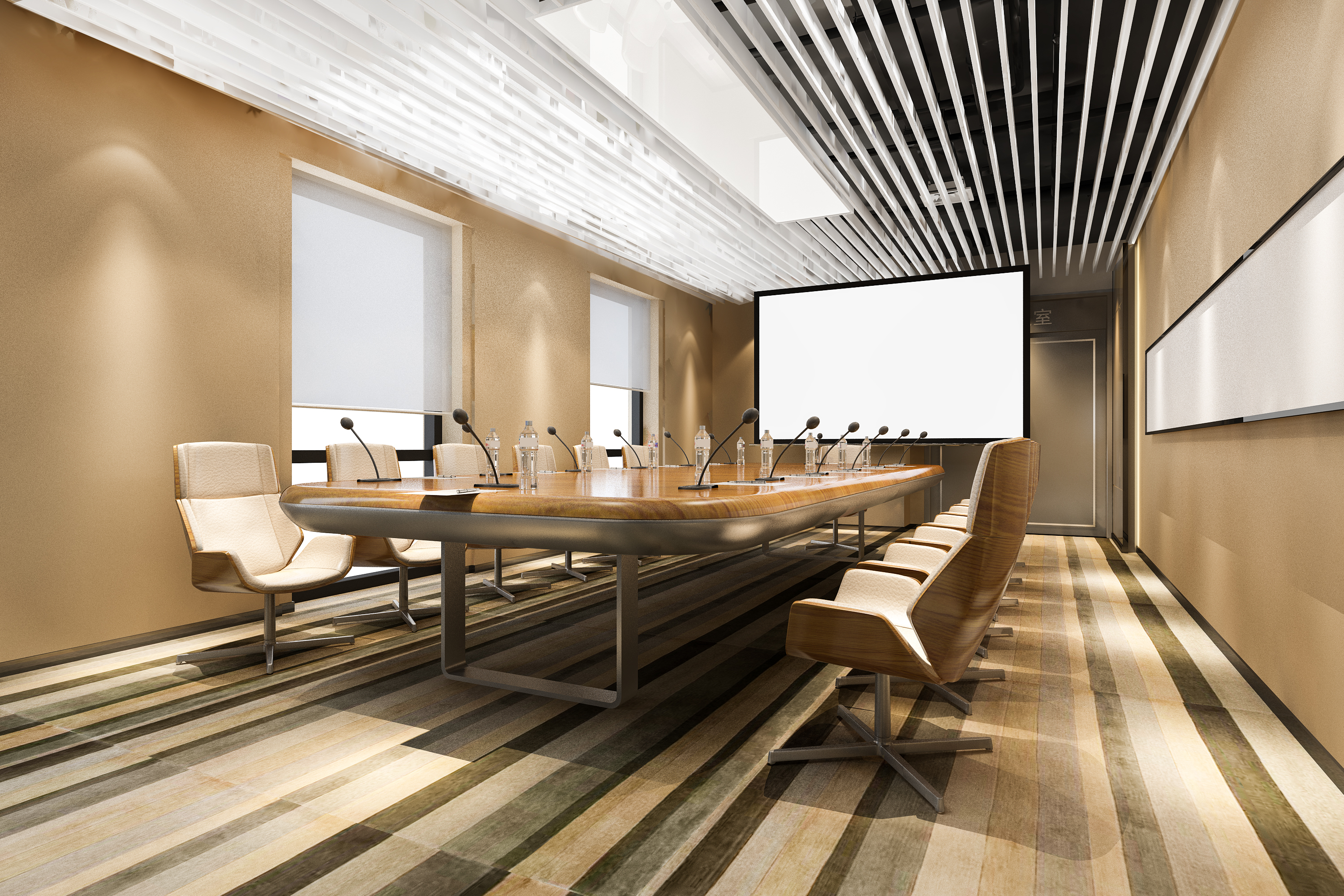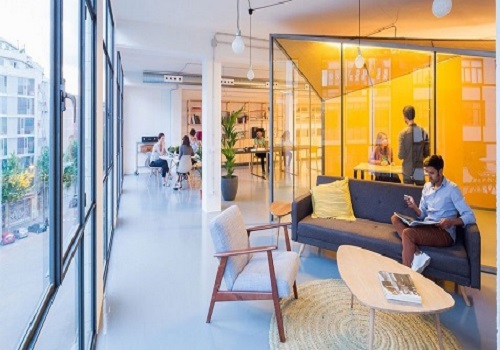Office Space: A Complete Guide to Choosing, Designing, and Managing the Perfect Workspace

Importance of Office Space
An office space is more than just a place to work—it's the backbone of employee productivity, company culture, and brand image. A well-designed office can significantly impact how your team performs and how your clients perceive your business. Whether you're running a startup, a growing enterprise, or an established company, having the right office space for rent plays a crucial role in your success.
A modern office space fosters creativity, teamwork, and efficiency by providing employees with a comfortable and inspiring environment. Moreover, the design and layout of your office can reflect your company's values and leave a lasting impression on clients and partners.
The way you manage your commercial office space also says a lot about your business. Good office space management ensures that resources are utilized effectively, the workspace stays organized, and your team can focus on their work without unnecessary distractions.
We’ll take you through everything you need to know about selecting, designing, and managing an office space. From tips on choosing the perfect design office space to insights on how to make it align with your business goals, this guide will help you create a workspace that boosts productivity and enhances your company’s image.
Types of Office Spaces
The modern workplace has evolved significantly, offering a variety of office setups to cater to different business needs. Whether you're looking for office space for rent or planning to design your own, understanding the pros and cons of each type of office is crucial. Let’s explore the most common types of office spaces.
Traditional Office
A traditional office setup usually consists of private rooms, cubicles, and designated workspaces. It offers a structured environment and is ideal for companies that prioritize privacy and confidentiality.
Pros:
Privacy: Employees have their own space, which helps minimize distractions.
Branding: Customization options to reflect your company’s identity.
Professional Setting: Suitable for industries like law, finance, and consulting.
Cons:
Cost: Renting or owning a commercial office space can be expensive.
Rigidity: Limited flexibility in terms of layout and collaboration.
Traditional offices are great for businesses seeking a professional and focused environment but may not suit startups or freelancers looking for flexibility.
Coworking Spaces
Coworking spaces are shared offices where individuals from different companies or freelancers work together. They have become a popular choice for startups and independent professionals.
Why Choose Coworking Spaces?
Flexible Options: Affordable and short-term rental plans make them attractive for businesses exploring modern office space solutions.
Networking Opportunities: Network with professionals who share your interests and discover potential collaborators.
Amenities: Facilities like high-speed internet, meeting rooms, and event spaces are included.
However, coworking spaces can sometimes lack the quiet atmosphere needed for certain tasks, and the shared setting might not work for everyone.
Remote Offices Space
With the rise of technology, remote offices or home-based setups have gained immense popularity. This trend has transformed how businesses operate.
Benefits:
Cost-Effective: Eliminates the need for expensive office space management and rent.
Work-Life Balance: Employees can perform their duties conveniently from home.
Global Talent Pool: Companies can recruit skilled professionals from anywhere across the globe.
Challenges:
Collaboration Issues: Remote setups may lead to communication gaps.
Isolation: Employees might miss the sense of teamwork found in traditional offices.
Remote offices are a great option for startups and businesses focusing on flexibility and cost efficiency.
Hybrid Offices Spaces
A hybrid office combines elements of remote work and in-office presence. It offers employees the choice to work from home or at the office, depending on the task or project.
Advantages:
Flexibility: Employees enjoy the flexibility to select their preferred work environment.
Collaboration: In-office days promote teamwork and idea sharing.
Cost Efficiency: Requires less commercial office space compared to fully traditional setups.
Hybrid offices are perfect for businesses that want to strike a balance between flexibility and collaboration.
Open vs. Closed Office Layouts
The debate between open and closed office layouts continues to shape how companies design office space.
Open Office Layouts:
Advantages: Promotes collaboration, transparency, and communication.
Disadvantages: Can be noisy and distracting, affecting productivity.
Closed Office Layouts:
Advantages: Ensures privacy, minimizes noise, and improves focus.
Disadvantages: Limits collaboration and may feel isolating.
Choosing between these layouts depends on your business needs and the type of work your employees perform.
Choosing the Right Office Space
Choosing the ideal office space is a pivotal decision for any business. Your office is not just a place to work but also a reflection of your brand and a key factor in employee productivity and client satisfaction. Here's a detailed guide on what to consider when choosing the right office space.
1. Location Matters
The location of your office space can make or break your business operations. A prime location ensures accessibility for employees, clients, and stakeholders.
Proximity to Clients: If you frequently interact with clients, a centrally located modern office space in a business hub will leave a lasting impression.
Convenience for Employees: Look for office spaces near public transportation or major highways to reduce commuting time and boost employee satisfaction.
Local Amenities: Being close to restaurants, banks, or other businesses adds to the appeal of your commercial office space.
2. Budget and Affordability
Budget is a crucial factor when choosing office space. While affordability is important, remember that cheap spaces may compromise on quality or location.
Set a Budget: Calculate how much your business can afford for rent without impacting other essential operations.
Hidden Costs: Be mindful of additional expenses like maintenance, utilities, or parking fees. These can significantly affect your office space management.
Value for Money: Ensure the space aligns with your needs—whether it’s a sleek design office space or a cost-effective solution in the suburbs.
3. Size and Scalability
The size of your office space should reflect your current needs and future growth plans.
Current Workforce: Consider the number of employees and ensure enough room for workstations, meeting areas, and break rooms.
Future Expansion: Opt for an office space that can accommodate your business’s growth. A flexible lease for office space for rent can be a great option.
Optimized Layout: A well-designed office ensures efficient use of space, promoting productivity and collaboration.
4. Legal and Lease Agreements
Understanding the legal aspects of renting an office space is essential to avoid complications later.
Lease Duration: Decide between short-term and long-term leases depending on your business needs.
Key Terms: Pay attention to clauses regarding rent increases, maintenance responsibilities, and renewal terms.
Legal Consultation: Always consult a professional before signing contracts to ensure all terms are favorable.
5. Accessibility and Transportation
An office that is easily accessible is a win-win for both employees and clients.
Transportation Options: Ensure that your commercial office space is close to public transportation hubs or has adequate parking facilities.
Inclusive Design: The office should be accessible to everyone, including those with disabilities.
Time-Saving: A well-located office reduces commuting time, boosting employee morale and efficiency.
Final Thoughts
Choosing the right office space is not just about finding a place to work—it’s about creating an environment where your business can thrive. Whether you’re looking for a modern office space with professional amenities or a cost-efficient office space for rent, keep these factors in mind to make an informed decision.
Your office reflects and reinforces your brand identity. A thoughtfully chosen space not only enhances productivity but also leaves a positive impression on clients and visitors.
Designing an Effective Office Space
Creating a functional and aesthetically pleasing office space is vital for fostering productivity and ensuring employee well-being. Whether you're planning to set up a modern office space or redesign an existing commercial office space, optimizing layouts, ergonomics, lighting, and technology can make all the difference. This guide explores key elements for designing an effective office while aligning with your business goals.
Optimizing Layouts
Balancing work zones and meeting areas is critical when designing an office. A well-thought-out layout can enhance productivity and collaboration. Open workspaces are ideal for teamwork, while private meeting rooms offer quiet zones for focused discussions. When managing your office space for rent, ensure the layout supports flexibility to accommodate changes in team size or work styles.
Tips for an Optimal Layout:
Designate clear zones for individual work, collaboration, and relaxation.
Include multipurpose areas that can adapt to various needs.
Maintain adequate spacing for smooth movement and comfort.
Ergonomics: Ensuring Health and Comfort
Investing in ergonomic furniture is essential for creating a workspace that promotes employee health and well-being. Adjustable desks, supportive chairs, and properly placed monitors can prevent posture-related issues and enhance comfort in modern office spaces.
Key Considerations:
Select height-adjustable desks for flexibility.
Opt for chairs with lumbar support to avoid back pain.
Arrange workstations to reduce strain on the neck and eyes.
Ergonomically designed spaces not only ensure comfort but also enhance productivity and minimize health-related absenteeism.
Lighting and Ventilation
The significance of natural light and proper ventilation in office design cannot be overstated. Bright, airy workspaces create a welcoming atmosphere and boost morale, making them a priority when managing office space for rent.
Benefits of Proper Lighting and Ventilation:
Natural light reduces eye strain and improves mood.
Fresh air circulation enhances cognitive function and focus.
Energy-efficient LED lighting can save costs in commercial office spaces.
Position desks near windows to maximize sunlight, and invest in ventilation systems that maintain indoor air quality.
Incorporating Technology for a Smart Office
In the era of digital transformation, integrating smart technology into your office is a game-changer. Automated systems can streamline tasks, improve communication, and enhance overall efficiency.
Must-Have Technologies:
Video conferencing systems for seamless remote meetings.
Automated lighting and climate control for energy efficiency.
High-speed internet and cloud-based tools for collaboration.
Whether you're designing a modern office space or upgrading an existing one, technology plays a crucial role in creating a future-ready workspace.
Reflecting Brand Identity
Your office design should reflect your company's values and brand image. From color schemes to wall art, every element of the office should convey your identity to employees, clients, and visitors.
Branding Through Design:
Use brand colors in furniture, decor, and wall accents.
Incorporate the company logo subtly into the design.
Showcase company achievements or milestones through creative displays.
A well-designed office not only reinforces your brand but also leaves a lasting impression on clients visiting your commercial office space.
Effective Office Space Management
Designing an effective office space also involves efficient management. Regularly reviewing layouts, upgrading technology, and maintaining furniture ensures that your office remains functional and inspiring. This is particularly important for businesses renting office space for rent or those managing commercial office spaces.
Pro Tips:
Conduct regular maintenance checks to ensure everything is in top condition.
Gather employee feedback to identify areas for improvement.
Keep the space clutter-free to maintain a professional atmosphere.
Managing Office Space Effectively
Effective office space management is key to ensuring a productive, comfortable, and inspiring work environment. Whether you're working in a modern office space, renting a commercial office space, or designing your own, here are some simple yet impactful tips for optimizing your office space.
1. Maintenance Tips: Regular Cleaning and Repairs
Regular cleaning and timely repairs are crucial for maintaining an inviting workspace. Dust-free desks, tidy workstations, and well-maintained furniture can make a big difference. Regular inspections of electrical outlets, air-conditioning units, and plumbing can help prevent bigger issues later.
Pro Tip: If you're managing an office space for rent, ensure a maintenance schedule is part of your lease agreement.
2. Space Utilization: Efficient Use of Available Space
Maximize the potential of your office by efficiently utilizing the available area. A well-designed layout should include dedicated spaces for workstations, meeting rooms, and relaxation zones.
Use modular furniture to create flexible design office space solutions.
Consider open layouts for better communication while maintaining quiet zones for focused work.
Compact storage solutions can free up additional room and reduce clutter.
3. Energy Efficiency: Cost-Saving Measures
Energy-efficient practices not only reduce costs but also help create a sustainable workspace.
Install LED lighting for better energy conservation.
Use solar panels for powering office utilities if possible.
Optimize natural lighting by arranging desks near windows and using blinds strategically.
Urge employees to turn off lights and devices when they're not in use.
An energy-efficient modern office space doesn’t just save money—it also promotes an eco-friendly
imageof your business.
4. Employee Engagement: Collaborative and Break Areas
Engaged employees are happier and more productive. Creating collaborative zones and comfortable break areas can significantly boost morale and teamwork.
Design a cozy lounge or break room where employees can relax and recharge.
Add vibrant décor and comfortable seating to create an inspiring atmosphere.
Use shared spaces for brainstorming sessions or team-building activities.
When managing commercial office space, think of these areas as investments in your team's productivity.
Future of Office Spaces
Office spaces are rapidly evolving, driven by technological advancements, shifting work dynamics, and a growing focus on sustainability. As businesses adapt to the modern world, the demand for smarter, more flexible, and eco-friendly workplaces is transforming how we think about commercial office space. Let's delve into the key trends that are shaping the future of office spaces.
Impact of Technology: AI and IoT Powering Smart Offices
Technology is at the forefront of modern office design, with Artificial Intelligence (AI) and the Internet of Things (IoT) leading the way. Smart office solutions are creating environments that are not only more efficient but also user-friendly.
AI-Driven Workspaces: AI enables offices to automate routine tasks, manage energy usage, and even customize lighting and temperature preferences for employees. For example, AI can optimize meeting room bookings or suggest layouts for better collaboration in design office spaces.
IoT Integration: Connected devices allow real-time tracking of office space management. Sensors can monitor desk usage, improve air quality, and ensure safety protocols are maintained. These advancements make modern office spaces more dynamic and adaptable to the needs of their users.
Businesses investing in smart office solutions will not only improve productivity but also attract forward-thinking professionals seeking innovative work environments.
Post-Pandemic Trends: Flexible and Remote-Friendly Designs
The COVID-19 pandemic brought a major shift in how we work, and office spaces have had to adapt to this "new normal." Companies are now focusing on creating flexible and hybrid workspaces that accommodate both in-office and remote work.
Flexible Office Layouts: Traditional cubicles are being replaced by open, adaptable spaces designed for collaboration. Employees can now choose between private workstations or shared spaces, depending on their tasks.
Remote-First Features: Many modern office spaces are being designed with technology that supports remote work. Video conferencing rooms, high-speed internet, and hot-desking systems are becoming standard in commercial office spaces.
This flexibility not only makes workplaces more efficient but also helps businesses save costs by optimizing the use of office space for rent.
Sustainability: Green Buildings and Eco-Friendly Initiatives
With climate change becoming a global concern, sustainable office spaces are no longer optional—they are essential. Modern offices are prioritizing green building practices to minimize their environmental footprint while promoting employee well-being.
Energy Efficiency: Green buildings incorporate renewable energy sources like solar panels and smart energy systems to reduce carbon emissions.
Eco-Friendly Materials: Sustainable office design includes using recycled or locally sourced materials for furniture and construction.
Biophilic Design: Adding natural elements like indoor plants, water features, and plenty of natural light not only reduces stress but also improves air quality and productivity.
Sustainability isn't just a trend; it's a necessity for businesses aiming to thrive in a world where eco-consciousness is becoming a priority. By integrating sustainable practices, businesses can create a modern office space that reflects their commitment to the planet.
Tips for Small Businesses: Budget-Friendly Options to Set Up and Manage Office Spaces
Running a small business comes with its fair share of challenges, especially when it comes to setting up and managing office spaces. Whether you're looking for an office space for rent or trying to maximize efficiency with a small budget, here are some practical tips to help you make smart choices.
1. Choose Budget-Friendly Options like Coworking Spaces
Coworking spaces have gained immense popularity among small businesses and startups. These spaces offer modern amenities, networking opportunities, and shared resources at a fraction of the cost of leasing a traditional commercial office space.
Look for coworking spaces in your area that provide flexible pricing plans.
Only pay for the space and services you actually use.
Benefit from a professional environment without long-term financial commitments.
Coworking spaces are ideal for businesses that need modern office space without the hassle of managing a full-fledged office.
2. Opt for Flexible Contracts for Scalability
When your business is in its growth phase, it’s essential to avoid being locked into rigid, long-term leases. Instead, choose flexible contracts that allow you to scale up or down based on your needs.
Consider short-term leases for office space for rent that can accommodate team expansion.
Explore coworking spaces or shared commercial office space options where you can rent additional desks or meeting rooms as needed.
Flexible contracts ensure you don’t pay for more space than required while giving you the ability to expand as your business grows.
3. Cost-Effective Interior Design Tips
Creating a functional and attractive design office space doesn’t have to break the bank. Here are some budget-friendly interior design tips:
Repurpose Furniture: Look for second-hand office furniture or upcycle existing items to save costs.
Multi-Purpose Spaces: Design areas that can serve dual purposes, like meeting rooms that double as workstations.
DIY Décor: Add personality to your office with inexpensive DIY décor projects, such as wall art, plants, or creative lighting.
Modular Furniture: Invest in modular furniture that can be easily reconfigured as your needs change.
A well-thought-out design will not only save costs but also improve employee productivity and satisfaction.
4. Invest in Office Space Management Tools
Efficiently managing your office space is key to saving time and money. Use technology to optimize your workspace:
Install scheduling apps for meeting rooms and shared resources.
Use space-planning software to make the most of small areas.
Focus on storage solutions like vertical shelving to declutter your workspace.
Good office space management ensures that every inch of your space is utilized efficiently.
Case Studies and Real-Life Examples
In the rapidly evolving business world, the demand for modern office spaces has surged as companies seek environments that align with their evolving needs. From optimizing work efficiency to fostering collaboration, the journey toward creating an ideal workspace is inspiring. Below, we delve into two core aspects successful office transformations and the impact of coworking spaces on startups.
Successful Office Transformations
Businesses are increasingly leveraging design office space concepts to reimagine their work environments. These transformations often include a mix of aesthetic upgrades and functional improvements to create spaces that reflect the organization’s ethos.
Case Study 1: A Tech Company’s Journey
A growing tech company faced challenges with its outdated and congested workspace. Their decision to upgrade to a modern office space for rent revolutionized their work culture. The new space featured open floor plans, ergonomic furniture, and breakout areas, resulting in:
A 30% boost in productivity due to improved natural lighting and ventilation.
Enhanced team collaboration through communal workspaces.
Positive employee feedback, with 85% of the staff feeling more satisfied and motivated.
Case Study 2: Retail Firm’s Space Optimization
A retail business struggling with commercial office space management underwent a transformation by integrating smart technology. Using IoT devices to track room usage, they optimized their seating and storage layouts. This led to:
Cost savings of up to 20% in monthly rental expenses.
Better utilization of underused areas, which became creative zones for brainstorming.
Coworking Spaces’ Impact on Startups
For startups, coworking spaces have become game-changers. They offer flexible office space solutions without the financial strain of leasing a traditional commercial property. Here’s how they’ve impacted the startup ecosystem:
1. Access to Affordable Spaces
Many startups can’t afford premium rents for prime office space for rent. Coworking hubs provide cost-effective alternatives, allowing startups to work in prime locations with shared amenities like meeting rooms, high-speed internet, and kitchen facilities.
2. Networking and Collaboration Opportunities
Coworking spaces foster a culture of innovation. Startups working side by side can share ideas, forge partnerships, and even secure investments. For example, a fintech startup collaborated with a marketing firm in the same coworking space, resulting in a successful joint product launch.
3. Scalability and Flexibility
Unlike traditional leases, coworking spaces offer month-to-month flexibility. Startups can easily scale up or down their office needs as their team grows. This eliminates the pressure of committing to long-term leases in commercial office spaces.
4. Boost in Creativity and Morale
Startups often thrive in dynamic environments. The vibrant energy of coworking spaces inspires creativity and encourages teams to think outside the box. Bright interiors, flexible work zones, and recreational areas contribute to a healthy work-life balance.
FAQs: Choosing the Right Office Space
Q1: What factors should be considered when choosing an office space?
When selecting an office space, consider location, accessibility, size, and budget. A central location that is easily accessible by public transport is ideal for employees and clients. Assess the size to ensure it meets your team’s current and future needs. Modern office space options often provide amenities like high-speed internet, meeting rooms, and security. Additionally, ensure the layout supports productivity and aligns with your branding.
Q2: What is the difference between coworking and traditional office spaces?
Coworking spaces are shared environments designed for collaboration and cost savings. They offer flexibility, networking opportunities, and amenities like furnished desks and utilities included in the price. Traditional commercial office spaces are private and provide more control over layout and branding but often involve higher upfront costs and long-term leases.
Q3: What are some budget-friendly tips for setting up an office?
Opt for pre-furnished or modern office spaces to reduce setup costs. Use multifunctional furniture and embrace space-saving layouts. Efficient office space management and shared resources, like coworking areas, can help keep costs low while maintaining a professional setup.






